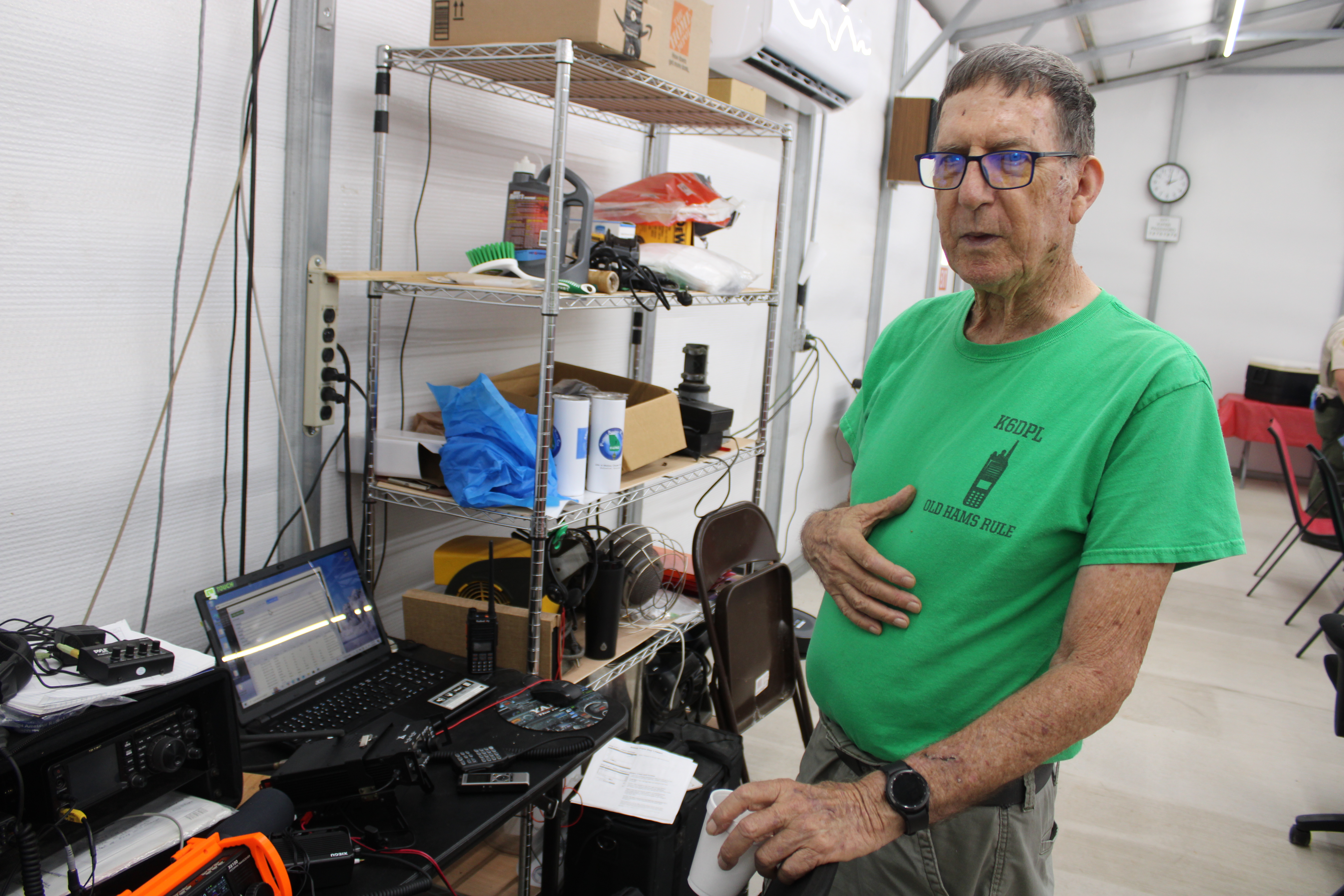OUR SPACE: SPHEREx gets to work
Published 8:00 am Wednesday, May 21, 2025

- NASA's SPHEREx mission is observing the entire sky in 102 infrared colors or wavelengths of light not visible to the human eye. The top image shows a section of the sky in one wavelength (3.29 microns), revealing a cloud of dust made of a molecule similar to soot or smoke. The bottom image shows the same region of space in a different infrared wavelength (0.98 microns), but the dust cloud is no longer visible. The molecules that compose the dust - polycyclic aromatic hydrocarbons - do not radiate light in this color. (NASA/JPL-Caltech)
It’s finally show time for SPHEREx, NASA’s brand-new whole-sky surveyor! About half a year ago we took a closer look at the unusual-looking spacecraft which launched on March 11 from Vandenberg Space Force Base in California. Official science observations began on May 1.
It is customary – and necessary – for a newly launched spacecraft to undergo a period of adjustments and calibrations once in space. For some, like the Webb telescope, this involves not only a considerable trip to their working orbit but also a sometimes hugely complicated unfolding process. Many spacecraft are carefully stowed in space-saving configurations to fit into their launch vehicle, and most of them need to extend solar panels or antennas to fully function and be able to communicate with the engineers and scientists back on Earth.
SPHEREx had it relatively easy – there was nothing like the dozens of steps of origami-like unfolding of Webb. SPHEREx extended its solar panels to start generating electricity, and once it had maneuvered itself into the desired position it was pretty much ready to go. Calibration and fine-tuning of its six cameras followed and when everything was determined to function as it should the telescope went to work.
Trending
It’s a very unique-looking telescope, too – its most domineering feature is a set of three concentric cones – reminiscent of the ones our pets get from the vet after they get their snip. But these cones are not there to keep the spacecraft from messing with surgery scars but rather to keep out any distractions and interference messing with what it’s meant to observe.
Unlike other space telescopes out there SPHEREx is a whole-sky surveyor, taking some 3600 photos every day, mapping the entire night sky over and over, and it does so in 102 different infrared wavelengths. The human eye can’t see in the infrared part of the spectrum, but if it could our brains would interpret each of those wavelengths as a different color. Since certain elements radiate in certain wavelengths, the same galaxy will look different in different wavelengths – revealing details that other wavelengths cannot show.
Within its first few days of operations SPHEREx has already given us a stunning amount of data and a three-dimensional look at its targets. Scientists will be able to overlay all the different wavelength images for a complete picture or examine each layer individually. Those overlays will generate a 3D image of the cosmos and aid in determining the distance of various observation targets.
The two year mission expects to survey some 450 million galaxies and over 100 million stars in our own galaxy, the Milky Way. In 25 months it will complete about 11,000 orbits, always facing away from the sun and the Earth to capture the view in every direction. This surveyor activity is hugely important for other space telescopes who are hunting for exoplanets or other targets – after all, every good journey needs an accurate map.
SPHEREx is much more than a map-maker, though. It will also be able to pick up on minute changes over its primary mission’s lifespan, and while the stars may seem eternal and unmoving to us they are in fact always in motion. For the average viewer, such as folks like you and me, the changes are invisible but as naked-eye observers we also have many disadvantages – the Earth’s rotation robs us of a steady reference point, our eyes just aren’t that good, light pollution makes all but the brightest stars disappear, we have clouds of water vapor (and mosquitoes) obstructing our view, and who of us can afford to sit outside all night and stare at the stars?
Once upon a time, that’s how it was done. People with infinite patience and a passion for recording what they saw (and granted, it was a darker planet hundreds and thousands of years ago and you could see so much more!) made their observations and tried to draw their own conclusions, puzzling out a universe by observation alone.
Trending
Lucky for us – we have machines to do this for us now, machines with no understanding of patience or perseverance – they just do what they do, and then report back. But just imagine for a moment, if you will, that it could be you out there, observing the entire visible universe as seen from Earth, in so many different colors and in such great detail. What a thrill that would be! You wouldn’t be able to contain your joy and wonder at the countless displays of beauty, and of course you’d want to share it with someone.
Let the SPHEREx telescope help you with that. After all, every spacecraft out there is an emissary of humankind, merely enhancing our own capabilities.
Learn more about SPHEREx and keep up with its observations at https://science.nasa.gov/mission/spherex/
Beate Czogalla is the Professor of Theater Design in the Department of Theatre and Dance at Georgia College & State University. She has had a lifelong interest in space exploration and has been a Solar System Ambassador for the Jet Propulsion Laboratory/ NASA for many years. She can be reached at our_space2@yahoo.com .





